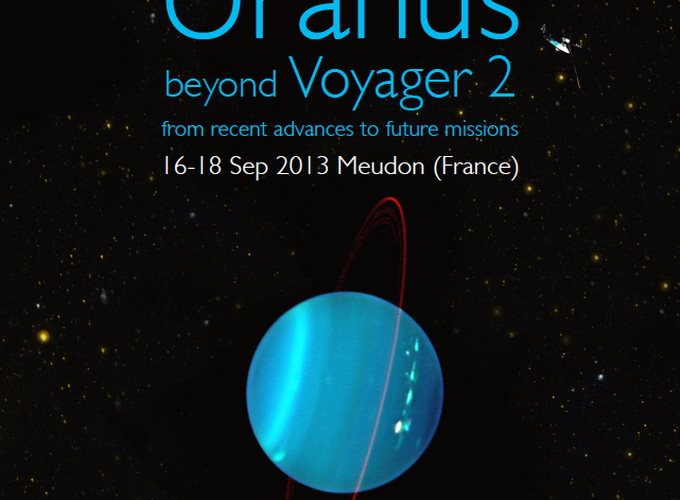In September 2013, Ice Giant scientists from around the globe met at the Observatoire de Paris-Meudon for a conference building on the scientific legacy of Voyager 2. The audience was composed of about 90 scientists and engineers from 12 countries, interested in the study of this unique planetary system.
Purpose of Meeting
The purpose of the meeting was to review the current knowledge of Uranus from past measurements, to highlight recent advances and ongoing studies on this planetary environment, and summarise the important unsolved scientific questions together with the key measurements required to address them. The meeting culminated in a discussion of the status of future international mission concepts in Europe and in the United States to explore the Uranus System, including updates on feasibility studies and available technologies, together with next Earth-based observing campaigns. The conclusions of the meeting are available to download here.
The format of the conference consisted of review and contributed talks on the interior and origins of Uranus, its system of rings and satellites, its atmosphere and ionosphere, its magnetic field and magnetosphere, and on the exploration of the outer heliosphere, with dedicated time for discussion and synthesis. The full abstract book is available here.
Meeting outcomes
The scientific and instrumental presentations made clear that Uranus is a top-level priority for several scientific fields. Its extreme planetary, magnetospheric, and heliospheric environments will bring ‘L-class’ science return in our understanding of fundamental processes operating in our Solar System and beyond. The crucial measurements needed to achieve the study of this system deserve an ambitious space mission, supported by complementary Earth-based observations. With the exception of Neptune, located twice as far away, Uranus remains the only planet not explored by a dedicated orbiting spacecraft. It thus stands as the next step for exploring the solar system, as witnessed by numerous Uranus mission concepts recently proposed to NASA, ESA and CNES calls.
As a community, we strongly support a mission toward Uranus, for which we highly recommend:
A spacecraft to be planned within the 2020-2030 decade, operating along an orbital tour designed to adequately sample the Uranian environment, with short polar orbits and repeated flybys of the main moons (especially Miranda and Ariel);
An atmospheric probe and/or aerocapture trajectory to complement remote sensing with in situ measurements;
and an instrumental payload adequate to fulfil the above key science objectives.
Immediate next steps require:
Feasibility studies to retire risks and develop required technologies for such a mission (phase 0 studies, power supplies such as Radioiosotope Thermoelectric Generators, propulsions modes, optimization of heliospheric measurements during the cruise phase, improved data compression techniques, optimization of telemetry …) ;
An examination of useful collaborations between national and international space agencies (in particular, lay the groundwork for a multi-agency, Cassini-class Uranus orbiter).
Organising committee
Scientific program : N. André, C. Arridge, L.N. Fletcher, D. Gautier, L. Lamy, A. Millilo, M. Hofstadter and M. Tiscareno
Local organisation : B. Cecconi, C. Briand, D. Gautier, S. Hess, N. Letourneur, L. Lamy, P. Schippers, T. Fouchet, P. Zarka and N. André
